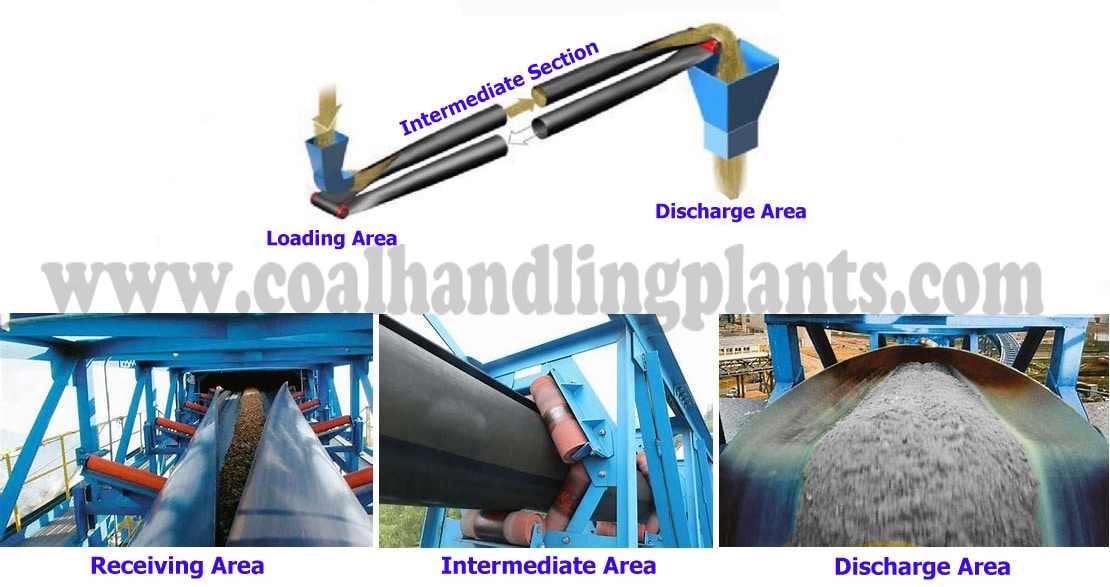Pipe conveyor belt is similar to conventional conveyor belt at material receiving and discharge area. In intermediate section, belt gradually takes on a pipe formation with the help of special idlers. This type of belts is widely used in mining, coal, cement, metallurgical and other industries.
Components & Working of Pipe Conveyor Belt
The pipe conveyor design comprises a loading or tail end section, intermediate section, head or discharge section and drive assembly.
-
Loading or Tail End Section
On the carrying side in tail end, skirts are provided to prevent spillage of the loaded material. During belt moving in the direction of travel, the belt is troughed via transition idlers. From the loading point, the conveyor belt is further gradually to the full pipe form. Adjustable troughing idlers along the section guide the belt into the formation of the pipe shape. The overlap in belt is at the top of the pipe formation and finger rolls are used to guide the belt in pipe formation.
Proper alignment of tail pulley, idlers and the centralized loading of the conveyor are all important to correct formation of pipe and positioning of belt overlap.
On the return side in tail end, the tubular form of belt is gradually opened from the point where the belt exits at the last idler support panel to the tail pulley. An adjustable return belt scrapper is provided prior to the tail pulley to remove any residual material from the belt before it passes through the tail pulley.
-
Intermediate Section
A position in between the point where the belt is formed into the tube and where the tube is reopened at the discharge point is termed the intermediate section of the pipe conveyor.
Once the tube shape is formed, this form is maintained on both the carrying and return side of the conveyor by means of idlers. These idler panels are spaced at a uniform interval along the conveyor length.
-
Head or Discharge Section
At head or discharge area, the pipe is gradually opened from the point of the last idler panel to the head pulley. The belt is supported throughout this transition section by a series of idlers. In this way the pipe conveyor is opened and the material being conveyed remains in the center of the opened belt.
The head pulley is at point of the discharge of the pipe conveyor and the entire conveyed product is discharged through the discharge chute onto the subsequent conveyors or equipment.
The idlers supported the belt through the transition section at head end are similar to those at the loading area. The idler frames allow the idlers to be adjusted.
-
Drive Assembly
It is used to drive the belt conveyor. It consists of:
- Motor
- Gearbox
- Coupling
- Brake
Safety switches like zero speed switch, pull cord switches, Belt sway switches and chute block switches are installed along the conveyor for safely operation of belt conveyor.
Advantages of Pipe Conveyor Belt
- Close transport of bulk material
- Curved arrangement of conveying lines
- The conveyor machine width is small
- Can increase the conveying inclination
- Protecting bulk materials from the sun, rain, wind and protecting the environment at the same time
- Overall savings in space requirement, structural and foundation cost.
RELATED SEARCHES: